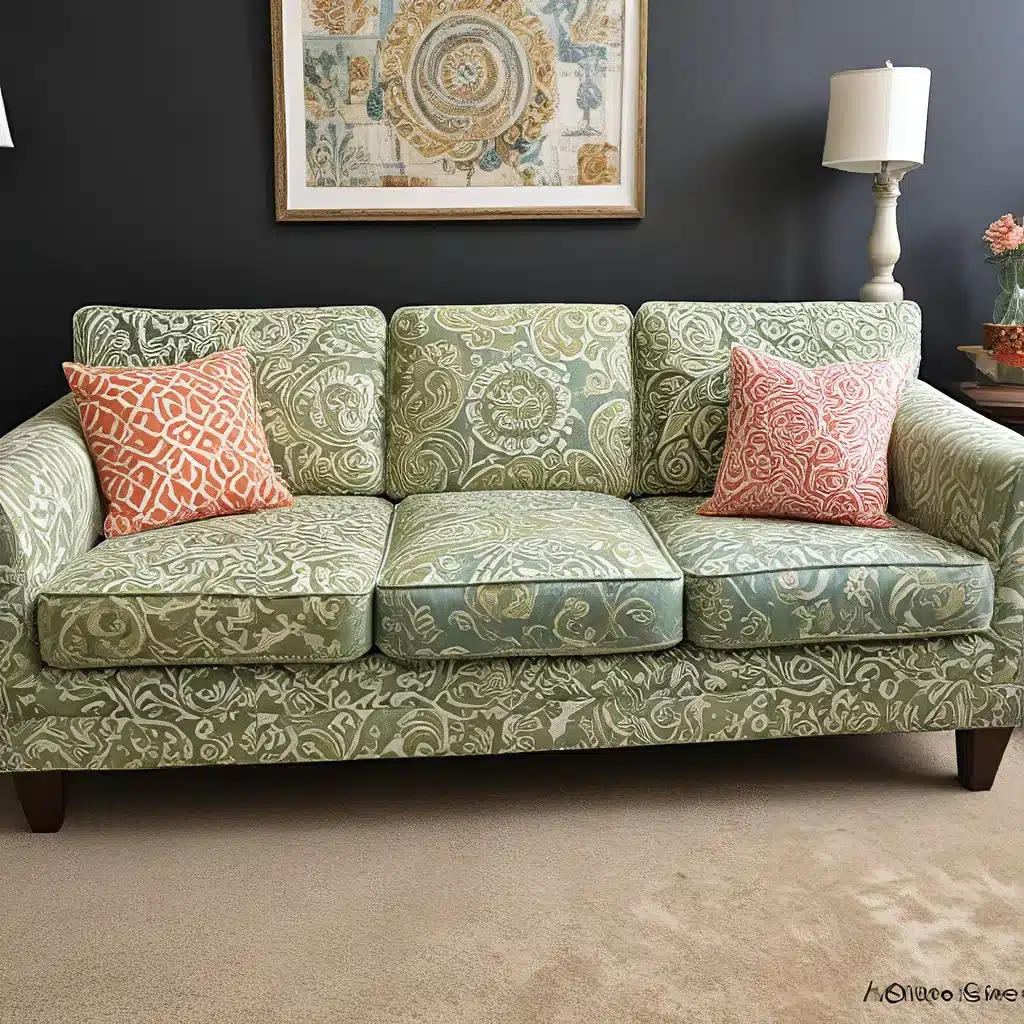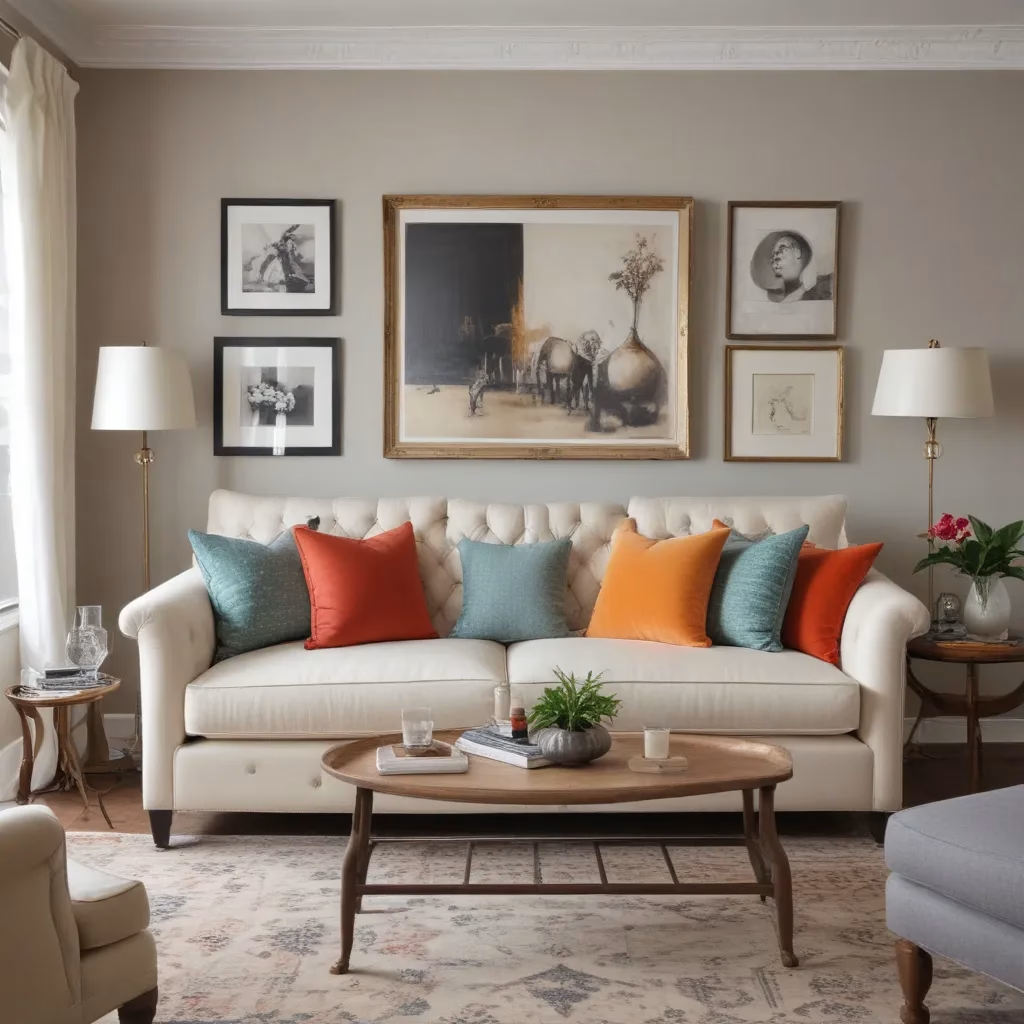
As a self-proclaimed antique and vintage furniture enthusiast, I’m always on the hunt for hidden gems at local thrift stores, garage sales, and estate auctions. There’s just something magical about uncovering a high-quality, well-made piece with tons of character – even if the color or condition isn’t quite what I had in mind.
That’s where the power of fabric dye comes in! I recently stumbled upon an absolutely gorgeous, vintage velvet sofa at my favorite secondhand shop. The bones were in great shape, the silhouette was classic, and the price tag was a mere £95. Sure, the original forest green hue wasn’t quite the vibe I was going for, but I knew with a little DIY elbow grease, I could transform this thrifted treasure into the perfect addition to my living room.
Why Dye Instead of Reupholster?
Now, I know what you might be thinking – “Why not just reupholster the sofa and get the exact color and fabric you want?” And trust me, I totally understand the appeal of a full-on reupholstery project. But when you factor in the time, effort, and cost involved, fabric dye starts to look like a pretty darn good alternative.
For starters, reupholstering a large piece like a sofa can be a major investment, both in terms of money and labor. You’re talking hundreds, if not thousands, of dollars in materials and professional labor fees. And let’s not forget the weeks (or even months!) of waiting while your furniture is in the shop. In my experience, that kind of timeline just doesn’t work when you’re trying to refresh your space on a budget and a deadline.
On the flip side, fabric dye is a quick, affordable, and incredibly satisfying way to breathe new life into an old piece. With the right supplies and a bit of elbow grease, I was able to transform my thrifted sofa in just a single weekend. And the best part? I only spent around £50 on materials – that’s over £40 in savings compared to reupholstering!
Getting Started with Fabric Dye
Alright, let’s dive into the nitty-gritty of how I pulled off this dye project. The first step was determining the type of fabric on my sofa. Now, I’ll be honest – this part wasn’t exactly straightforward. The tags were long gone, and the fabric had that oh-so-familiar “vintage” feel that made it hard to pinpoint the exact fiber content.
After doing a quick burn test (always a good idea when dealing with secondhand furniture!), I determined that the fabric was likely a viscose or rayon blend. This meant I needed to use a synthetic fabric dye, like the kind from Sofa Spectacular. Regular all-purpose dyes simply wouldn’t cut it.
With the right dye in hand, I got to work prepping the sofa. First up, a thorough cleaning. I started by letting the sofa bake in the sun for a few hours to help kill any lingering odors or bacteria. Then, I gave it a good spritz with Lysol and a heavy dusting of baking soda, letting that sit overnight before vacuuming it all up.
Mastering the Dye Application
Now came the fun part – actually dyeing the fabric! I decided to go with a rich, dramatic peacock green shade, which I knew would complement the existing wood tones and brass accents in my living room.
To get the best coverage, I opted to use a paint sprayer instead of a brush or roller. This allowed me to apply the dye in thin, even coats, minimizing any visible streaks or unevenness. I mixed up a batch of dye in my trusty paint sprayer, working in sections to ensure I had complete coverage.
One word of caution: be sure to let each coat of dye dry completely before applying the next. I made the mistake of getting a little too eager on my first pass, and ended up with some unfortunate blotchiness. Patience is key when it comes to getting a smooth, professional-looking finish.
Once I had the desired depth of color, it was time to seal everything in with a fabric dye fixative. Again, I used the sprayer to apply a couple of light, even coats, making sure to get into all the nooks and crannies. This step is crucial for ensuring the dye won’t rub off or fade over time.
The Dramatic Reveal
After allowing the fixative to fully dry, I stepped back to admire my handiwork. Gone was the dated forest green, replaced by a rich, saturated peacock hue that felt perfectly at home in my moody, masculine-leaning living room. The high-quality velvet fabric had taken the dye beautifully, and the overall effect was simply stunning.
I have to admit, I felt a little like a professional upholstery wizard – not bad for a weekend DIY, if I do say so myself! And the best part? My thrifted sofa now looks like a high-end designer piece, all for a fraction of the cost of reupholstering.
Tips for Dye Success
If you’re feeling inspired to try your hand at fabric dyeing, here are a few key tips I’d recommend:
- Test first: Always do a small spot test to ensure the dye takes well to your specific fabric. This will help you gauge the coverage and color intensity.
- Ventilate well: Fabric dye can get messy, so make sure you’re working in a well-ventilated area, preferably outside or in a garage. Wear gloves, too!
- Go slow: Don’t try to rush the process. Let each coat of dye dry completely before adding the next, and be patient with the fixative step.
- Protect your surfaces: Cover your floors and surrounding areas with drop cloths to avoid any unwanted dye splatters or spills.
- Consider your fabric: Certain fabrics, like patterned or textured upholstery, may be more challenging to dye evenly. Stick to solid, smooth fabrics for best results.
With the right preparation and a little elbow grease, you can breathe new life into even the most tired, outdated furniture. And who knows – you might just end up with a one-of-a-kind piece that’s the envy of all your friends!



